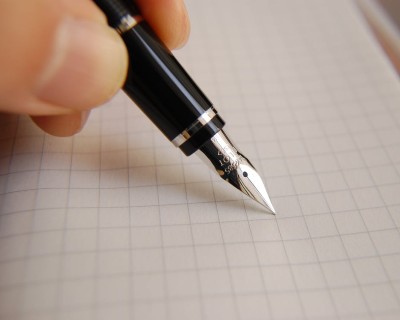Handwriting – The mirror of Knowledge!
Is it difficult to decipher your child’s Handwriting? Unfortunately, you aren’t the only parent who has this issue. Many parents and instructors claim that today’s youngsters and teenagers don’t have the same quality of handwriting that the same age of children had in the previous generations.
There are numerous explanations for this. However, the fundamental cause is that some children used to write too fast. When they try to write fast, their handwriting may look messy and unreadable. So..what’s the best way to deal with it? “Make an effort to write neatly.” But how do you do it?
We doubt you might be wondering how to encourage your child to write neatly with better handwriting. If so, here we have shared a few causes of lousy handwriting. Also, we have listed a few activities and approaches to help youngsters and teens improve their handwriting.
But, before we go any further, it’s essential to understand why handwriting improvement is crucial and what abilities are required to do so.
Why is it essential to improve my handwriting?
In every sphere of life, communication is the key to success. Therefore, when you cannot communicate verbally, your writing should speak for you! But, if your handwriting is not legible, how would you communicate with writing? Hence, it is essential to have good handwriting. Also, there are other benefits that good handwriting offers. Some of them are listed below:
Benefits of improving Handwriting
- Enhance brain-power (studies have proven that concentrating on writing improves memory and brainpower. This is because continuous writing practice will store the data in a kid’s mind)
- Improves Clear and Legible writing (with better handwriting, your data will be accessible for the readers to understand)
- Increase Grade points in academics (improvement in handwriting will not just enhance your brainpower. It enhances your grade points in academics since it is in a readable form for the teachers)
- Develop Fine Motor Skills (Fine motor skill is nothing but improving hand movement and finger strength)
- Enhance Confidence
- Promotes Patience
- Improves personality
- Generates neat writing even when you write faster.
- Provides clarity in thoughts
What are the characteristics of Handwriting?
Whether it is an everyday writing practice or a personal signature, every person has a unique handwriting style. Even identical twins won’t share the same style of handwriting. But, the basic characteristics of handwriting remain the same for all. What are they?
Letter spacing: Some people write with a lot of white space between the letters, whereas others write with a lot of black space. However, the space between characters in a word should be consistent.
Letter separation: Letter spacing isn’t the only factor in beautiful handwriting. Word separation and joins are included. Hence, whenever you write, lift the pen when it is necessary.
Line Quality: Like letter spacing and separation, line quality plays a major role in legible handwriting. The qualities of a great line include fluidity, consistency, thickness, and so forth.
Diacritic placement: The punctuation marks, dot on letters (e.g., i’s), and cross on letters (e.g., t’s) are all examples of diacritic placement.
Line adherence: Some children’s writing soars above or dives below the line. This allows for sloppy handwriting to emerge. Hence, children should be taught to write on a line.
How to improve handwriting?
If you want to enhance your child’s handwriting, figure out whether he or she is right or left-handed. There are options accessible for both left and right-handed people to enhance their writing. So just focus on it.
Hey, hang on. Before that, observe where and how your child is having difficulty. This will help you build better handwriting skills with your child.
Let’s review the most typical handwriting challenges that every writer encounters.
What are Handwriting Difficulties?
Behind every good handwriting, there lie smaller skill sets associated with visual perceptual, sensory-motor, and cognitive domains. So, if a person or writer fails in learning any of these skill sets, they may face handwriting difficulties. Besides, several other elements cause handwriting problems. Some of the most common things are:
- Poor fine motor skills
- Poor coordination of right and left side of brain and body (bilateral integration)
- Poor visual-motor integration (visual perception and eye-hand coordination)
- Poor visual tracking (eye movement)
- Poor postures and muscle tone
- Poor cognitive skills.
- Poor pencil grip
- Slow and effortful writing
- Inconsistent hand dominance
Common Handwriting Problems
1. Letter shapes
Every child struggles to learn the shape of a letter while learning it for the first time. For example, learning English letters takes longer for children. This is because seeing different-sized letters, lowercase letters, and uppercase letters may confuse you.
Note: Lowercase letters are smaller and have more edges and curves. Hence, it may be more difficult for certain children to write.
2. Problem with spacing and joins
As previously said, good handwriting is characterized by space and word connections. However, some children struggle with word spacing and join. This is because certain words are made by combining two words with the help of an apostrophe or a hyphen. As a result, grasping the concept of space might be challenging at first.
3. Positioning of the body
Writers should sit in a comfortable position before starting to write. When writing, body posture is crucial. For instance, the writer’s elbow should be up against the body if the paper is laid straight. However, if the paper is set at an angle, the writer will have entire body movement and mobility, including wrist extension and flexion.
4. Smudged Work
If you are a left-handed person, then you might have this problem. What was it? When you write something, your hand follows the writing line, and it will automatically smudge.
5. Difficulty in holding the writing instrument
Many children hold their pen or pencil with their whole hand. It doesn’t allow them to write perfect shapes. Also, some kids hold their writing tool too close to the tip; it may hide the words when writing. Due to this, their writing either flows above or falls below the line.
Soo…If your child is having trouble with any of these issues, assist them in developing the necessary handwriting abilities. How? Try involving some fun activities to improve handwriting skills. Here are some best activities to observe and assist your child in developing Handwriting abilities. Shall we look at them?
Activities to improve Handwriting skills:
1. Sensory activities
What skill you’ll gain: Visual-Motor Integration – Enables your hands to accurately replicate what your eyes see (eye-hand coordination) Example: Shapes, Letters, and Numbers.
Activities:
- Teach your kids to practice letter shapes and numbers using color paints or sand. You can also write any letter in the sand and assist your child in tracing it over.
- Matching shapes – If you have alphabetical blocks, allow your child to match them.
- Join the dots – draw the letter shapes in dotted format and train your child to join them using pen, pencil, or marker.
2. Puzzle or building block
What skill you’ll gain: Fine Motor Skills – finger movement and dexterity skills. This manipulates and controls the pencil grip.
Activities:
- Building block
- Puzzle
- Cutting paper
- Create fun messages
3. Playdough, clay, or slime
What skill you’ll gain: Hand & Finger Strength helps a kid hold a pen or pencil for a longer period.
Activities:
Kids are usually attracted to playing with dough, clay, and slime. Hence, make use of any materials. With clay or dough, you can make shapes and toys. This will strengthen your hands and fingers.
4. 3D structures
What skill you’ll gain: Visual perception – increases writing abilities by ensuring adequate letter spacing and font size.
Activities:
Play with blocks – some block games include geometric shapes such as cubes, squares, hexagons, pentagons, and other shapes. You can encourage visual vision in your children by playing such block activities.
Closure:
We hope that the information provided above has given you a better understanding of why improving handwriting is essential and what causes sloppy writing. All you need to do is: just grab some tips from an expert and implement them in your kids’ writing!




















